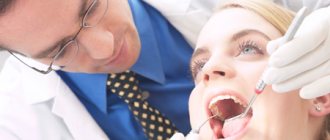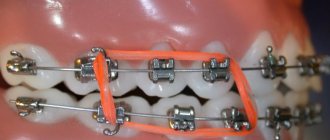Candidiasis (thrush) is a fairly common pathology, which is characterized by damage to the mucous membranes and skin by a yeast-like fungus of the genus Candida. This microorganism is a representative of the normal human microflora, constantly living in the body in small quantities. However, when the nominal defense is weakened, its active reproduction begins, which leads to the development of the disease. Our modern medical center offers quick and painless treatment for candidiasis, which helps prevent serious health consequences.
Manifestation
This pathology is diagnosed in both men (less often) and women, regardless of age and other characteristics. In practical medicine, the following forms of candidiasis are most often diagnosed:
Vaginal is a female variety that can occur at any age.
Oral - in most cases detected in infants.
Generalized is the most complex form, in which the patient experiences severe fever, symptomatic damage to the central nervous system, gastrointestinal upset, changes in normal blood counts (increased leukocytes and neutrophils), and disruption of homeostasis. It often develops in premature babies, drug addicts, those who have recently undergone surgery, those receiving chemotherapy, and those taking corticosteroids or antibiotics.
Read about medical tourism on our partner’s website https://medtour.help/ru/
The following types of this disease are also distinguished:
Superficial: damage to the mucous membranes, mouth, skin. In adults, genital candidiasis is more common, and in childhood - oral candidiasis.
Deep: spread of the pathological process to the organs of the digestive tract, urinary and pulmonary systems.
Candidal sepsis: generalized infection of organs.
Candidiasis of wound surfaces.
Causes
As mentioned above, fungi of the genus Candida are representatives of the opportunistic microflora of the human body. Under normal conditions, their vital activity does not cause any harm, but when the environment or internal environment changes, they can begin to actively multiply and trigger a number of pathological processes. This leads to the appearance of a disease that is almost impossible to cope with on your own. There are several possible reasons why these microorganisms begin to divide uncontrollably. This:
- A decrease in immune defense (due to previous pathologies or operations, chronic diseases, constant stress or depression, physical or mental stress);
- Long-term use of antibacterial drugs without medical prescription;
- Hormonal imbalance (including during pregnancy) or metabolic disorders;
- Insufficient or improper nutrition;
- Presence of bad habits (alcohol abuse, smoking, drug addiction);
- The use of antimicrobial hygiene products that help destroy normal microflora;
- HIV infection;
- Promiscuous sexual intercourse without barrier protection;
- Taking hormonal contraceptives;
- History of endocrine diseases (diabetes, excess weight, thyroid dysfunction, etc.);
- Hot weather conditions;
- Wearing poor quality or tight underwear.
Causes of candidiasis
Intensive reproduction of the fungus can be provoked by various factors:
- Prolonged hypothermia or, conversely, being in a climate that is too hot and humid.
- A disease, especially if antibacterial drugs are used in its treatment.
- Severe stress.
- Changes in hormonal levels (with endocrine disorders, use of hormonal drugs, during pregnancy).
- Choosing underwear that is the wrong size or made from synthetic materials.
to contents ^
Transfer methods
There are several ways you can get this fungal infection. The most clinically important among them are:
- Infection of the fetus from a mother infected with candidiasis. In this case, the disease is contagious in 70% of cases from all births, regardless of whether the child passes through the birth canal (naturally or through a cesarean section);
- Contact and household path. Contact with a sick person or carrier (hugs, kisses, sexual intercourse, sharing the same dishes, bedding or clothing) is almost guaranteed to lead to transmission of infection;
- Sexual contact without using barrier methods of contraception (condom);
- Failure to comply with personal hygiene rules. This is irregular use of water procedures, ignoring oral care (especially for carious teeth), prolonged wearing of underwear, etc.;
- Contact with surrounding objects on the surface of which fungi of the genus Candida are present. It is important to understand that these microorganisms can maintain their vital activity under optimal environmental conditions for two weeks.
- Through the gastrointestinal tract.
Diagnosis and treatment of systemic thrush
Very often, systemic candidiasis is diagnosed in advanced stages, when the infection has penetrated deeply into the body and affected several organs. In this case, drug therapy will not help completely get rid of the fungus. At any period of life, the patient may again encounter a fungal disease and its consequences.
If you have suspicious symptoms, you should make an appointment with your doctor. During the initial appointment, the specialist will ask about disturbing symptoms, collect all important data, and conduct a visual examination. To clarify the diagnosis, a referral is given for a comprehensive diagnostic examination.
Laboratory diagnostic procedures play a leading role in determining and identifying the causative agent of systemic candidiasis. They allow you to identify the pathogen in the blood and other biological fluids of the body:
- sputum;
- effusion formed in the abdominal cavity;
- feces;
- exudate released from wounds on the body.
The laboratory assistant takes the necessary samples, after which in the laboratory, using special equipment, he identifies the type, quantity and extent of distribution of the microorganism.
To confirm the diagnosis, the following diagnostic measures are prescribed:
- Repeated blood donation for seeding and cultivation in a nutrient substrate.
- Biopsy of affected organs.
Additionally, instrumental research methods are prescribed that will help assess the general condition of the body and the functioning of internal organs:
- radiography;
- endoscopy;
- gastroscopy;
- magnetic resonance imaging (MRI);
- computed tomography (CT);
- ultrasonography.
Treatment of systemic candidiasis is selected individually and is aimed at solving the following problems:
- Elimination of the root causes that provoked a malfunction of the immune system and activation of the growth of a fungal infection.
- Destruction of the causative agent of visceral candidiasis.
- Stimulation of the body's immune defense, involving the use of immunomodulators, vitamin and mineral complexes.
- Normalization of the functioning of affected internal organs.
- Restoration of beneficial microflora of the body.
To destroy a fungal infection, antimycotic drugs are prescribed, the dosage and duration of use of which is determined by the doctor individually, taking into account the degree of neglect, the severity of the disease and the general health of the patient.
The following systemic antifungal drugs will help quickly and effectively destroy a fungal infection:
- "Amphocetrin B";
- "Flucytosine";
- "Fluconazole";
- "Miconazole";
- "Itraconazole"
In case of complicated course of systemic candidiasis, in addition to antifungal therapy, solutions of potassium and sodium iodide, antigastamines, and a polyvalent vaccine based on Candida cultures are prescribed.
Throughout the entire period of treatment, the patient must remain in the hospital under the constant supervision of medical staff and the attending physician. This allows you to monitor the dynamics of therapy in detail and, if necessary, adjust the therapy regimen. After the disease is defeated, the patient must follow the rules of prevention throughout his life to prevent relapses.
Candidiasis symptoms
In the vast majority of cases, this pathology occurs with a noticeable clinical picture. The degree of its severity depends on the individual characteristics of the organism, but the presence of characteristic symptoms will almost always be detected. Symptoms directly depend on gender and location of the pathological focus.
How does candidiasis manifest in women?
Urogenital candidiasis predominates among the female audience. According to official WHO statistics, about 75% of women have experienced vulvovaginal candidiasis at least once in their lives, and in about half of them it had a recurrent form. This disease is characterized by damage to the mucous membrane of the vulva and vagina, but sometimes the cervix, urethra and bladder are involved. Candidiasis vulvitis and vulvovaginitis, which does not affect the urinary tract, has the following symptoms:
- Milky-whitish discharge from the genital tract with an unpleasant odor;
- Discomfort, itching and pain in the vulva area. Unpleasant sensations intensify after urination, at night and after water procedures;
- Pain during sex, increased formation of discharge after sexual intercourse.
Vulvar candidiasis can occur in typical and atypical forms. The first category includes:
- Catarrhal-membranous vulvitis;
- Catarrhal chronic vulvitis.
As a rule, the clinical picture of these forms includes burning and itching in the genital area. Unpleasant sensations intensify before the menstrual cycle, decrease or disappear completely during and after menstruation. The mucous membrane of the vulva becomes hyperemic and acquires a purplish-blue tint. Small bubbles are revealed on the mucous membrane, after opening which large erosions form in their place. The labia minora are covered with white cheesy films. In the chronic course of the disease, congestive hyperemia and tissue infiltration may appear, and the affected tissues become significantly thicker and dry.
The atypical category, in turn, includes the following types of chronic vulvitis:
- Leukoplakiform.
- Kraurosa-like.
- Asymptomatic.
They are diagnosed quite rarely and, as a rule, are chronic. From the mucous membranes of the vulva, the pathological process can spread to the inguinal-femoral folds and the perianal area. Such complications are more likely to occur in individuals with underlying medical conditions (eg, diabetes mellitus or myxedema).
Candidal vaginitis is characterized by the spread of fungi to the vaginal mucosa and uterine cervix. The affected vagina becomes hyperemic and covered with a curd coating, and deep erosions form on the walls. Patients note copious discharge, which can be viscous, foamy and even purulent in nature with a pungent odor. Intense itching, burning and soreness appear in the genital area.
Candidiasis of the pup uterus is usually the result of disease progression. This indicates an ascending infection by fungi that penetrated through the external pharynx. Often this complication develops due to inadequate functioning of the ovaries. It is characterized by the presence of discharge from the cervical canal, which looks like white lumps or thick mucus. Upon visual examination of the uterine cervix, dense films are revealed on it.
Relatively rare symptoms of genitourinary candidiasis are urethritis and cystitis. Symptoms include: pain in the lower third of the abdomen, pain during urination, painful urge. Upon examination, the doctor detects swelling and redness of the urethral sponges, as well as curdled flakes near the external opening of the urethra.
How does candidiasis manifest in men?
The genitourinary form of candidiasis in men, as a rule, takes the form of balanitis - inflammation of the glans penis or posthitis - inflammation of the inner layer of the foreskin, or a combination of both. Balanoposthitis, caused by fungi of the genus Candida, belongs to the group of sexually transmitted diseases. Now there is a negative trend towards the growth of this pathology, which is associated with the increased use of hormonal contraceptives among women.
Symptoms of candidal balanoposthitis: hyperemic and swollen skin of the penis, the presence of a pale gray coating. Candidiasis on the head can be complicated by the formation of erosions, which contributes to the addition of a secondary infection. If the pathology worsens or in the absence of timely treatment, phimosis may develop due to scar formation. In addition, possible complications may include erysipelas, lymphadenitis, and even the development of a malignant neoplasm.
Urogenital candidiasis in men is much less common. In this case, damage to the urethra is characterized by itching, burning and a small amount of mucous or purulent discharge. During a medical examination, the patient is diagnosed with white plaque on the mucous membrane of the urinary canal. After the plaque is removed, a swollen and highly hyperemic urethral mucosa appears in its place.
In children
In childhood, in the vast majority of cases, oral candidiasis is diagnosed. Its clinical picture consists of the following signs:
The appearance of a white cheesy coating on the outer surface of the tongue.
Infants refuse to breastfeed, cry for no reason, and have trouble falling asleep. Older children begin to experience an unpleasant taste in the mouth, pain and discomfort while chewing or swallowing food.
The saliva becomes viscous, making it more difficult to swallow (you have to make more effort or drink more water).
Enlargement of regional lymph nodes.
Seizures - cracks, painful macerations in the corners of the mouth.
Types and symptoms of candidiasis
Manifestations of the disease are very diverse and depend on the specific location of development of the inflammatory process.
Oral candidiasis
Oral candidiasis is most common in childhood. It manifests itself as redness of the mucous membranes of the throat, gums and tongue. Swelling develops. As the disease develops, areas of white plaque with a cheesy consistency form on the oral mucosa. If treatment measures are not taken, their number increases, and erosions occur under the plaque.
When oral candidiasis becomes chronic, damage to the mucous membranes of the nose, pharynx and esophagus is possible.
to contents ^
Candidiasis of the skin
Fungal pathology can spread in the folds of the skin: in the armpits, under the mammary glands. The folds between the fingers and toes are affected. In some cases, skin lesions outside the folds are noted.
The disease manifests itself in the form of small blisters. Individual areas merge to form affected areas. Between the toes of the limbs there is peeling of the skin, cracks, and itching. Externally, the palms look like they are burned.
to contents ^
Candidiasis of the genital organs
This type of disease affects the external organs of the reproductive system: in women – the vaginal mucosa, in the stronger sex – the glans penis and foreskin. A clear sign of the disease is copious white curdled discharge accompanied by itching. There is discomfort during intimate contact and when urinating.
Candidiasis localized in the intestines
Most often it occurs as a result of previous intestinal infections and the use of antibacterial drugs. In children, this condition can be caused by poor nutrition.
Intestinal candidiasis is manifested by pain in the abdomen, flatulence, diarrhea, and the presence of white cheesy flakes in the stool.
Treatment
Our medical center practices an integrated approach to the treatment of any disease. Thanks to this, our doctors are able to achieve recovery in the shortest possible time, as well as effectively prevent the development of relapse. Therapy begins with a preliminary medical consultation, during which a qualified doctor collects stings and conducts a thorough examination of the patient. If necessary, an additional diagnostic examination is prescribed, which makes it possible to make an accurate diagnosis and prescribe the optimal treatment plan depending on the individual characteristics of each organism. Diagnosis of candidiasis in our clinic is carried out in a high-tech laboratory equipped with advanced technologies. This allows you to get accurate and reliable results as quickly as possible. Based on the obtained diagnostic data, the attending physician selects a treatment strategy, which differs depending on gender, localization of the pathological focus, stage of the disease, concomitant diseases, individual intolerance to certain components of medications, etc.
Treatment in women
For uncomplicated candidiasis, only local therapy is allowed. It is aimed at suppressing the inflammatory process and suppressing fungal activity, as a result of which the patient’s general well-being improves. For this purpose, special antifungal creams, vaginal tablets and suppositories are used (for example, Clotrimazole, Natamycin and much more). As practice shows, complete cure when using suppositories and creams occurs in 6-7 days. Prescribing new generation drugs for mild forms of the disease makes it possible to recover in 1-2 days.
To prevent a possible relapse in the future, the treatment course is repeated twice. After using local medications, it is necessary to rest for half an hour, as this enhances the therapeutic effect of the medications. That is why vaginal tablets and suppositories are recommended to be placed before bedtime. Along with topical medications, patients are prescribed a course of antibiotics. The drug of choice in this case is Flucanazole at a dose of 150 mg. This is especially true for patients who have previously had recurrent infections. Taking antibacterial agents helps not only eliminate symptoms, but also prevent exacerbation of the pathology.
An equally important component of successful treatment of genital candidiasis is abstinence from sexual intercourse during the period of therapy. In addition, it is strongly recommended to limit active sports, give up bad habits and review your diet (add fresh vegetables and fruits, fish, lean meats). You will also need to regularly see your doctor, attend appointments responsibly, and promptly report changes in your health.
Therapy for pregnant women also has a number of features. Most of the drugs included in the first line are toxic to the fetus. Due to the development of a large number of side effects, their use during pregnancy is impossible. In such a situation, the preferred option is Nystatin and Pimafucin. These medications are safe for the body of a pregnant woman and child, even in large dosages.
Treatment in men
In case of uncomplicated course of the disease, for complete recovery it is enough to use local antifungal drugs. For this purpose, ointments or creams that contain Clotrimazole are prescribed. The treatment course consists of taking the medicine 2 times a day for a week. After this, you will need to contact the injured doctor again, who can evaluate the results. If a therapeutic effect cannot be achieved, then general action drugs are prescribed to enhance treatment. In addition to drug treatment, the patient will need to reconsider his lifestyle. For a quick recovery, you will need to abstain from sexual intercourse while taking medication, limit active physical activity and take measures to improve immunity.
Treatment in children
As mentioned above, the oral form of candidiasis most often develops in childhood. A review of the diet plays an important role in eliminating it. The child needs to increase the daily intake of foods high in vitamins. The affected areas of the skin are treated with a solution of brilliant green, fucorcin or mycoseptin. In the absence of the desired effect or the course of the disease is complicated, Nystatin is prescribed.
Candidiasis in men
Representatives of the stronger sex are much less susceptible to candidiasis compared to women. This is due to the anatomical characteristics of the male body.
When affecting the male body, thrush manifests itself as follows:
- There is swelling and redness in the area of the glans penis and foreskin.
- There is a burning sensation and pain when urinating.
- During an erection, intimate contact and after it, pain occurs.
- A white cheesy coating with a sour odor appears.
The appearance of symptoms of candidiasis in a man signals a serious malfunction in the body’s defense system.
Lack of proper treatment in men leads to the development of candidal balanitis (damage to the glans penis) and balanoposthitis (inflammation of the foreskin).
For information about the characteristics of the disease and common myths associated with thrush, watch this video:
to contents ^
What tests to take and which doctor to contact
When the first symptoms of candidiasis appear, you should immediately consult a doctor at our medical center. As a rule, patients in such a situation turn to a gynecologist for help, and patients make an appointment with a urologist. Diagnosis of the disease is carried out on the basis of collected complaints and examination of the affected mucous membranes. The diagnosis can be confirmed by examining vaginal or penile discharge using light microscopy. Bacterial culture on a nutrient medium is also actively used to determine the sensitivity of detected fungi of the genus Candida to antifungal drugs. If necessary, consultation with third-party medical specialties is involved. First of all, this concerns a venereologist who carries out a differential diagnosis of candidiasis with other common sexually transmitted infections (gonorrhea, trichomoniasis and much more).
Many people mistakenly believe that candidiasis can be diagnosed without laboratory testing methods or only using PCR. In fact, the most accurate way to confirm this diagnosis is microscopy of a smear taken from the affected mucous membrane. Thanks to this, it is possible to accurately determine the overgrowth of Candida fungi. The following diagnostic procedures are performed in the laboratory of our clinic:
Smear microscopy.
- Bacterial seeding (cultivation);
- Linked immunosorbent assay;
- Polymerase chain reaction.
Candidiasis in women
To a greater extent, genital candidiasis occurs among women: about 75% of them have experienced its symptoms at one point. In half of the women who became ill, the disease relapsed.
Candidiasis in women makes itself felt with the following symptoms:
- noticeable milky-white, curd-like vaginal discharge with an unpleasant odor;
- a feeling of itching, irritation, burning, most noticeable after urination and water procedures, as well as before menstruation;
- pain during and after intimate contact.
If a woman ignores such manifestations, the disease can spread to the area of the inguinal folds, affecting the vaginal mucosa and, in some cases, the vaginal area of the cervix.
to contents ^
Complications
Ignoring this problem and postponing medical consultation can lead to serious consequences, the specifics of which depend on the type of candidiasis. Vaginal candidiasis poses the greatest danger to pregnant women. This is due to the fact that thrush infects the fetus, as a result of which after birth the newborn becomes sick with candidiasis. In addition, infection with this pathology leads to a loss of elasticity of the vaginal tissues, which is fraught with severe ruptures during the passage of the fetus through the natural birth canal. As a result, recovery after childbirth will be longer and more painful. However, the most serious complication in pregnant women is miscarriage or premature birth.
In men, candidiasis can be complicated by infection of the prostate gland, which can lead to infertility. If the esophagus is involved in the pathological process, then this gradually causes damage to the deep-lying layers, resulting in the formation of necrosis, which is difficult to treat conservatively.
Diagnostics
Diagnosis of vaginal candidiasis is carried out as follows:
- Microscopy of a smear test for thrush: a scraping is taken from the vaginal walls with a special swab onto a glass slide for further examination under a microscope. If there is an infection, Candida fungi will be present in the smear.
- Sowing - growing a culture of fungus from a smear scraping for analysis for thrush. Candidiasis is only diagnosed when fungal colonies grow to 10,000 CFU/ml, since in most women they are always present in the vagina.
- Determination of the type of Candida fungi and their sensitivity to medications.
Prevention
Knowing the basic symptoms and treatment of candidiasis, the methods of its transmission and the characteristics of its course, you can protect yourself and your loved ones from infection. This does not require you to greatly limit your daily life or adhere to strict rules. It is enough to follow these simple recommendations:
- Correct use of antibacterial drugs. Antibiotics should be prescribed exclusively by a doctor for serious indications. It is strictly forbidden to self-medicate, independently increase the dosage of the prescribed medication or extend the course of therapy. It is also recommended to discuss the issue of additional intake of probiotics, which will help maintain the composition of normal microflora;
- Limit contact with a sick person or potential carrier. If a pathological focus forms (family or company), it is necessary to limit communication with them until they fully recover;
- Compliance with personal hygiene rules. You must shower daily and use only your own towel for your body and face. You also need to pay careful attention to oral care. It is important to ensure timely sanitation of teeth affected by caries;
- Caring for children's toys, pacifiers and other items that a child may lick;
- Proper and rational nutrition. A person’s daily diet should contain a sufficient amount of proteins, fats, carbohydrates, microelements and vitamins. It is highly recommended to consume plenty of fresh fruits and vegetables, fish, dairy products and lean meats;
- Wearing comfortable and high-quality underwear made from cotton materials;
- Refusal of casual sexual contacts, especially without the use of barrier contraception. This will help avoid contracting a large number of sexually transmitted infections (including candidiasis).
- Timely visit to the doctor and undergo preventive examinations. This is especially true for a gynecologist and urologist, who must be visited at least once a year.
Candida mushrooms: from conditionally pathogenic to pathogenic
These oval or round unicellular microorganisms are present in the normal microflora of most healthy people. They are well protected from external factors and feel quite comfortable at human body temperature.
The very presence of Candida fungi in the body does not equate to a disease: the development of the pathological process begins if, under the influence of any factors, the fungi begin to actively multiply.
In most cases, this occurs due to decreased immunity.
The onset of the disease does not indicate a change in the properties of the fungus, but rather a change in the state of the body, in particular, a sharp decrease in its protective mechanisms.
to contents ^









